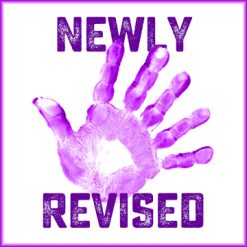|
E-Learning Is Big Business,
But Also Major Maintenance
By Rick Gordon
Voice Actor & Owner
e-Learning Voices.com & Commercial Voices.com
 No doubt about it, e-learning - the voice-over genre of typically brief, multiple files for education and training projects - is growing in leaps and bounds. But keeping a handle on things is a major chore for all involved. No doubt about it, e-learning - the voice-over genre of typically brief, multiple files for education and training projects - is growing in leaps and bounds. But keeping a handle on things is a major chore for all involved. For instance, here at E-LearningVoices.com we're doing our best to keep control of multiple projects with multiple talents almost on a daily basis. "Control" is the key word.
Perhaps your personal e-learning work involves a relatively simple procedure of recording your portion, whether it is a bit part or you are the main narrator, and then billing the client.
Count yourself as extremely lucky if this is all that is required from start to finish!
MULTI-LAYERED TASK
Following is a run-down on how major projects are controlled at our end.
The first thing you have to accept is that payment will probably not be made to anyone within a 30 day period. Why? It may often take up to 90 days to complete a single e-learning production.
Creating an e-learning production is a multi-layered task. We voice-over talents are only one cog in the creative wheel. And we are usually the last cog.
FOR EVERY PROJECT ...
Here is our procedure at E-LV:
KEEP RECORDS
As a participating VO talent, you should keep a record of all of your submissions and confirm with the client what was used.
How is this confusing?
Unless the client specifies receiving only one submission per script, many VO talents will submit more than one "read style" of the script. This may be edited by the client, and you may be asked to edit and re-submit.
So for instance, while perhaps nine minutes were submitted, only four minutes were used.
WHAT TO NOTE:
Keep a detailed record of:
MIGHT DRAG ON
All of this could take many additional days as the Instructional Designers implement all the audio parts into their final production.
And in addition to the above, the client may request that your submissions be broken down into individual files with specific file names.
We charge $1 extra for each file edited, and the fee goes to the VO talent in addition to the "voicing fee".
Of course, there is yet more to know about the process, and perhaps, concerns you may not have thought of. Our FAQ can help: http://www.e-learningvoices.
Cheers!
ABOUT RICK ...
Rick Gordon is a veteran voice talent based in Canada, and is also the founder/owner of Commercial Voices.com and co-founder/owner of e-Learning Voices.com - two major online voice-over marketplaces. Commercial Voices.com was created 10 years ago as the web site where voice talents are "hit and heard." e-Learning Voices.com was introduced in 2008 specifically for e-Learning voice-over projects.
Also See: E-Learning: How To Get Hired For Projects - Or Rejected, by Rick Gordon
Email: rgordon@commercialvoices.com
Commercial Voices.com: http://commercialvoices.com/join.php e-Learningn Voices.com: http://www.e-learningvoices.com/

Your Daily Resource For Voice-Over Success
|
As of the NEW website launch, 03/22/2012








.png)
I would suggest, however, that this is only one production firm's experience and chosen enterprise methods. While true that fastidious accounting and tracking of file takes and redos may be needed, the process isn't that far afield from running any other casting and production session, be it Animation or Telephone aps.
We produce e-learning courseware audio in growing client content, for about three of the leading E-learning firms. Our largest hurdle was coming up with the $2 million single incident Errors and Omissions and PLC liability coverage policy, against the Statement of Work(s), which does not sound as if has been an issue for Rick's e-Learning Voices firm. I've advised a few of these firms, that in most cases, most VO talent in home based studios or basements, won't have this either. Since we now do, we have no issue and are usually cleared.
We do subcontract for a double down invoicing period, in which the e-learning courseware provider or publisher has thirty days from signed Statement of Work to bill and receive payment from their client for this portion of production which includes a portion of the line item for audio - and then once we go to work which is after the 30 days from signed Statement of Work, we know we have our down payment coming; the latter balance upon receipt of final bill from the courseware provider's end client.
This then, is like money found at the back end of the pipeline, or one last remaining payment.
While we do not opt to have multiple and endless variation takes from each VO talent, we believe and promote that it's our job, as the contractors for this part of a production, just as done for any other entertainment media brand or industrial application, to direct the talent to what we and invariably the client wants. Client gives us script, as shuttled to the hired VO talent after voice choices, recording, and then audio goes back to client for approval. Then as aftermath, we go back to pick up any single redos. On final approved audio, we have to export the large quantities of individual encoded line files, labeling for each one, to FTP for their courseware team assembly.
But once they get the audio FTP'd, the project is done; and generally only with one pick up session as needed from a VO talent - usually about 75-80% being done up front and about 20% or so as production sessions timing for any redoes on the back end. We usually hope for the remaining payment balance in about 60 days.
Thanks, Rick. I'm sure your model succeeds for you. And thanks, John, as always, for making this forum available after an article post.
Ron Knight
Knight Mediacom